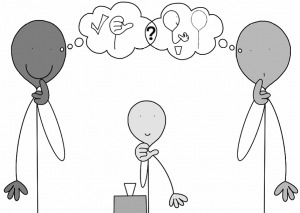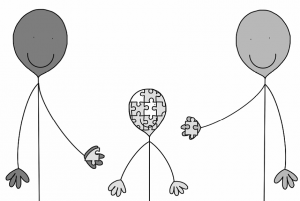We have been thinking about shared images to support our training on the DOT Deaf project. We’re working to produce modules in four signed and three written languages so don’t often share a word or a sign for ideas but a picture really does help. Feedback on our draft modules has emphasised how much a picture can help discussion. Understanding a picture by discussing it helps promote discussion of concepts.
I read a paper today about the complexity of deaf children’s language situations and whether the idea of ‘communication mode’ is helpful (Hall, M. L., & Dills, S. (2020). The limits of “Communication Mode” as a construct. Journal Of Deaf Studies And Deaf Education, 1–15. https://doi.org/10.1093/deafed/enaa009).
It made me think of some of the pictures we have chosen to use to show how we need to work together to understand a child’s language strengths and needs. Finding the pieces and completing the jigsaw – it’s what we try to do with children everyday.



